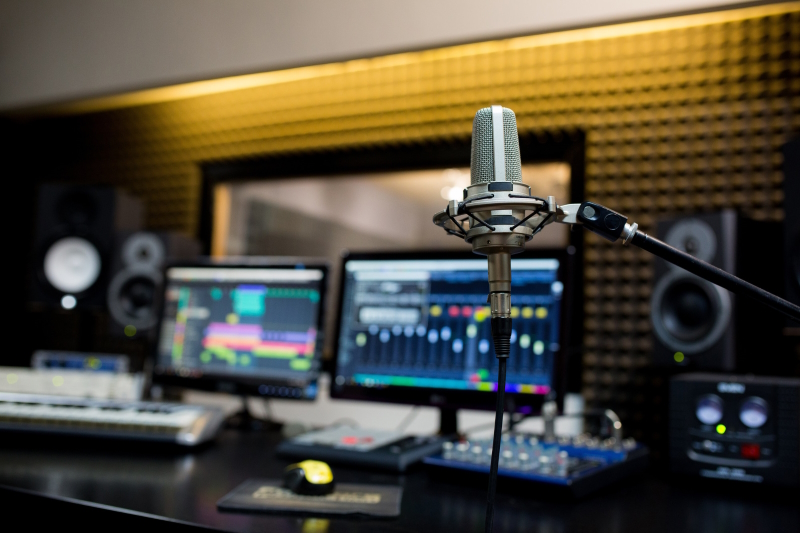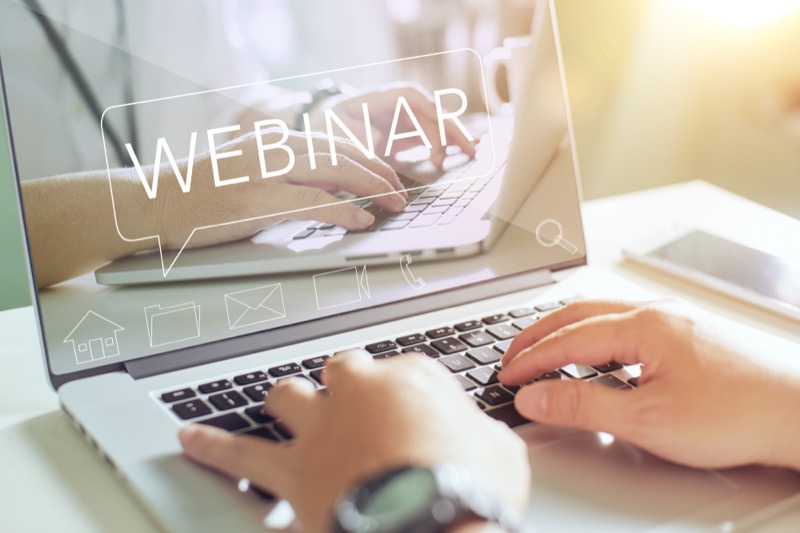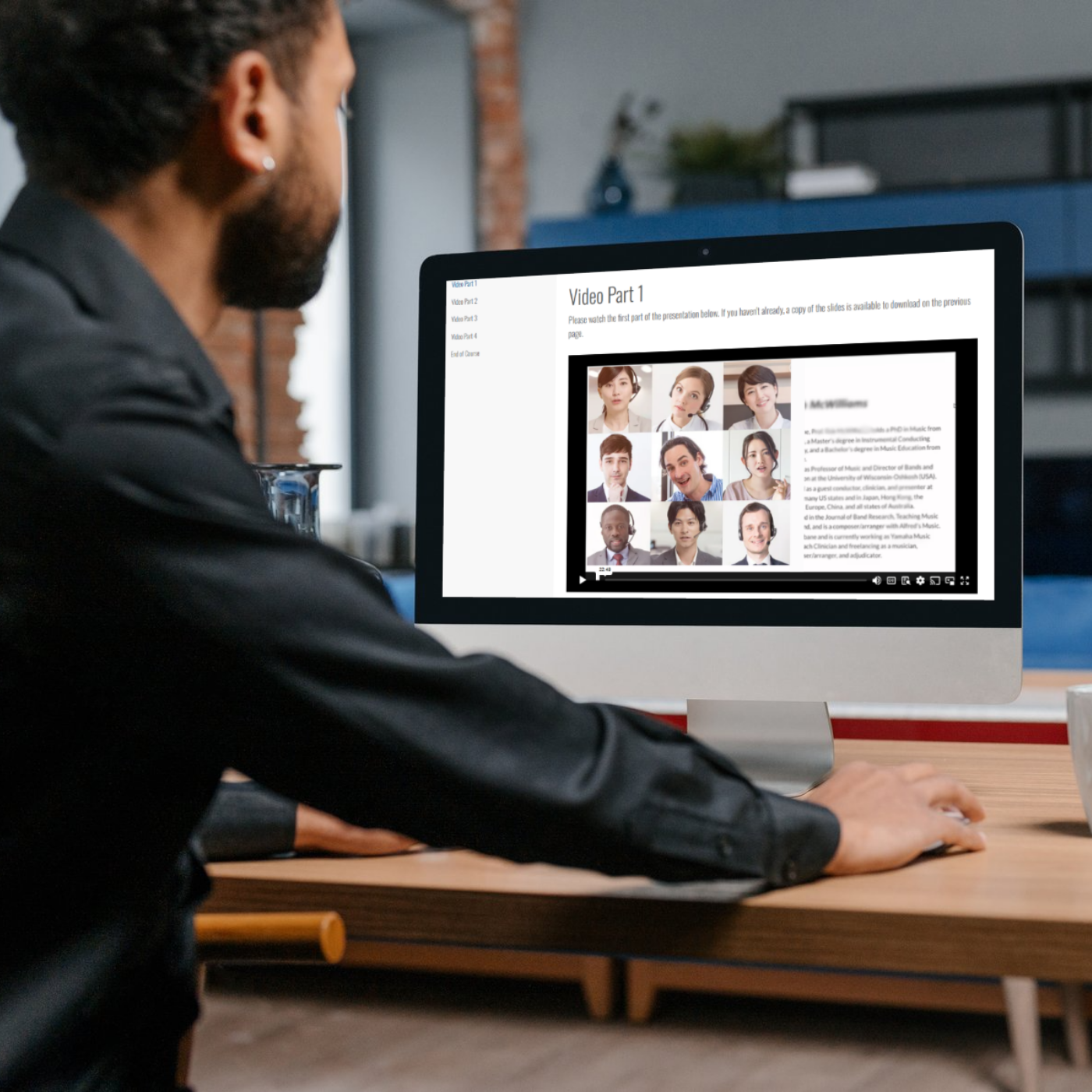Best Practices for Repurposing Your Webinars for Maximum Impact
Did you know that58% of the best resultsfor content marketing in the previous 12 months were created by webinars and online courses?

Video content has become, in many ways, the mainstay of the internet. If you only consider internet traffic, more than 80 per cent of it goes to video content of one kind or another.
Of course, professional associations and not-for-profit organisations don't usually specialise in video content. They may release the occasional video, but they aren't focused on a YouTube channel. If anything, you're more likely to run a webinar.
The good news is that if you start recording webinars and capturing good audio, you can convert your webinars into useful secondary content.
Are you unsure where to start when it comes to capturing your webinars? Keep reading for ten tips that will help you record your webinars for later use.
If you don't usually run webinars, you might wonder why you'd want to get involved with doing them. There are a few advantages.
Webinars are, by nature, time-limited events. As a general rule, webinars run for around 60 minutes. While you can fit a lot of information into an hour, it's not so much time that it overwhelms the people organising and running the webinar.
Another advantage is that entry-level webinars typically max out at around 500 participants. You can limit attendance even more by capping participant numbers. By keeping the numbers low, you can spend time filtering for and answering the best questions.
Remember that mention of secondary content above? Webinars give you a solid block of raw content that you can turn into shorter videos for use on social media. You can also turn good webinar content into online courses for your in-house staff or for people outside of your organisation.
With that out of the way, let's dive in with tips that will help you get the best recordings possible.
Before you worry about equipment or software, you should pin down who will participate in your webinar panel. These participants will shape the direction of the webinar content, either because of their individual preferences or particular expertise.
It's also a matter of scheduling. You can usually rely on in-house staff to show up when and where you need them, barring an accident or emergency.
That's rarely the case for people outside of your organisation. If you want an outside expert to participate, you must almost always work around their schedule.
At some point, most professionals attended a truly terrible webinar where the panellists rambled or, even worse, never covered the topic the webinar was meant to cover.
Situations like that are why you need a script for the webinar. Webinar scripts aren't always like the more traditional scripts you might see for a TV show. You typically only see those if someone is running a webinar as a solo host and wants to ensure they cover very specific pieces of content.
If you're running a panel-style webinar, you still want a loose script that outlines topics or talking points that you'll cover during the webinar. It helps keep everyone on task.
Many webinars now use moderators to help keep panel webinars moving along according to the loose script.
A good recording depends on securing a quiet space for the panellists, assuming they'll show up in person and not remotely. Minimally, you need a quiet space for your in-house staff to participate.
Background noise can make audio recordings almost unusable. Some common examples of background noise include:
Limiting those noises with the right space will get you much better recordings.
There are numerous webinar hosting platforms out there. They offer different features and options, often depending on whether the software is free or paid.
Minimally, you want a platform that supports screen and audio recording. While it's not the only footage you'll use, it's useful footage to have.
You'll also want your own screen recording software to capture what's happening on your own screen as the webinar progresses. For example, if you're using PowerPoint slides, you're better served by having a direct recording of it from your own screen.
Most webinars will require at least one webcam, so the attendees can see the moderator, host, or panellists. While it's not an absolute requirement, you should look for a webcam that offers 4K resolution.
With that out of the way, you should also consider a second, 4K camera that you use purely to capture video of the host or panellists. Ideally, you'll have a camera person who can shift the camera to focus on panellists that are speaking.
Capturing this kind of video independently of any footage captured by screen recording software or a webcam gives you more options after the fact for putting together video clips or augmenting any video courses you may put together.
It also serves as a kind of backup in case you lose some or all of your other recordings.
While you'll likely get some audio from a general webinar recording, that audio often lacks good clarity. If the bandwidth slips, you can end up with audio blank spots. If you want quality webinar audio recording, you'll need at least a few additional tools.
At a basic level, you'll need some microphones. You can get good quality USB microphones at relatively reasonable prices. You can also find lapel microphones or wireless microphones.
If you opt for USB microphones, you can generally record the audio from those microphones as independent tracks straight onto the computers they're plugged into.
If you want to use lapel mics, you can theoretically record with those onto a computer, but you're usually better off plugging them into a portable audio recorder.
Wireless mics can prove tricky, as some direct audio directly to a video recording device or software, while others record to an independent track. You must select the mic based on your preferences.
You will need audio recording software if you plan on recording one or more independent audio tracks. There are two main concerns: time and format.
You need software that can handle recording for the full hour. Fortunately, there are free software packages that can handle audio recordings at that length.
You must also consider the audio editing process. While MP3 files are great for distribution, they're terrible for editing. You may want to record your audio using an uncompressed audio file format, such as WAV.
You should always do a dry run of the webinar. Ideally, you'll do it with all of the scheduled panellists.
The dry run does a lot for you. The first thing it does is let you test out all of your equipment.
Are all the cameras transmitting or recorded as needed? Are all the mics picking up good sound with their current settings? Is all the software capturing audio or video?
Working out those bugs in advance can save you a lot of headaches.
Doing a dry run also lets you walk through the script in advance. This will expose the weak spots in the script and allow you to make adjustments. For example, you may discover that you must cut something out to keep it down to an hour.
It also gives you recorded video and audio versions of the material where there are no interruptions from guests asking questions.
At this point, with the panellists, script, and tech squared away, all that's really left for you to do is run the actual webinar. Do your best to integrate the lessons you learned from the dry run.
Check the settings on all of the audio and video equipment. Make sure that you see, hear, or both for anyone that is participating as a panellist remotely.
Try to have at least a little bit of fun. Remember, you're on camera!
Once you wrap up the webinar, there is one last thing that you need to make sure that you do. Store copies of all of your recordings. Yes, that means creating a full copy of every video and audio file and storing them somewhere other than where you store the original files.
Cloud storage is often useful for these purposes. You can also consider a portable drive, such as a USB drive. These copies ensure that you don't lose the whole thing, even if the computer you keep the originals on catches fire or the hard drive dies.
If all of the tips above make recording webinars sound like a lot of work, there is some truth to that. Yet, recorded webinars serve a couple of purposes. You can use them for clips you post elsewhere or create learning content from them.
The catch is that you need good video and good audio. That almost always means investing in some equipment and software to capture that audio and video.
Intuto specialises in converting webinars to online courses. If you're interested in converting your webinars, meet with us today.

Did you know that58% of the best resultsfor content marketing in the previous 12 months were created by webinars and online courses?

Your association hosts fantastic webinars. Your members show up, they learn, and they engage. But what happens a week later? That valuable content,...

For nearly every association, the mandate is clear: find ways to create new revenue streams. According to a 2023 report, a significant portion of...